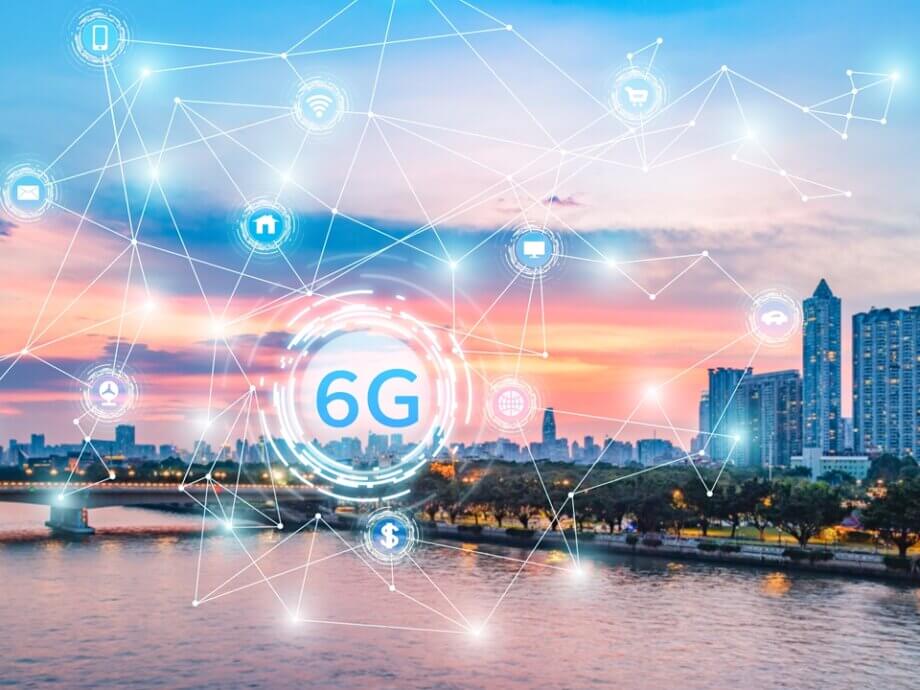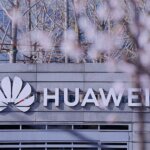China’s Leap in Low-Earth Orbit Satellite Technology
China has achieved a significant technological milestone that could reshape the future of global communications: a breakthrough in low-Earth orbit (LEO) satellite technology, specifically in digital beam-forming and high-speed laser data transmission. This achievement, led by Pengcheng Laboratory and the Harbin Institute of Technology (Shenzhen), positions China at the forefront of the race to develop 6G networks and integrated space-terrestrial connectivity. The implications extend far beyond faster internet—they touch on economic competitiveness, national security, and the very architecture of the digital world.
Through a series of rigorous field and orbital tests, Chinese researchers demonstrated substantial improvements in signal-to-noise ratios for LEO satellite communications, a critical factor for reliable, high-speed data transfer. Their self-developed baseband system achieved up to 5.5 dB gain in transmission and 2.6 dB in reception, marking a leap in the practical application of collaborative communication theory to satellite links. This paves the way for extending China’s national computing power network into space and enabling the seamless integration of terrestrial and satellite networks required for 6G.
What Makes This Breakthrough So Important?
LEO satellites orbit much closer to Earth (typically 500–2,000 kilometers above the surface) than traditional geostationary satellites. This proximity means they can deliver lower latency and higher data rates, making them ideal for next-generation applications such as autonomous vehicles, telemedicine, and immersive virtual reality. However, the high-speed motion of LEO satellites poses significant technical challenges for maintaining stable, high-quality connections. The Chinese team addressed this by developing a tracking algorithm that integrates satellite ephemeris (precise orbital data) with high-precision angle estimation, achieving tracking accuracy better than 0.1 degrees.
This level of precision is crucial for digital beam-forming—a technique that uses multiple antennas to focus signals in specific directions, reducing interference and maximizing data throughput. The successful demonstration of multi-antenna digital beam-forming in a high-dynamic LEO environment is a world first, offering a new system design for large-scale satellite constellations and robust, reliable satellite links.
How Does This Advance 6G and Integrated Networks?
6G, the sixth generation of wireless technology, is expected to be commercially available around 2030. It promises not just faster speeds and lower latency than 5G, but also the integration of communications, sensing, computing, artificial intelligence, big data, and security into a unified network. The vision for 6G is a seamless “air-space-ground” network, where terrestrial infrastructure, satellites, and aerial platforms work together to provide ubiquitous, high-capacity connectivity.
China’s breakthrough in LEO satellite technology is a cornerstone for this vision. By enabling stable, high-speed links between satellites and ground stations, China is laying the groundwork for a network that can support:
- Digital twins and world models (virtual representations of real-world systems for simulation and optimization)
- Artificial intelligence agents requiring real-time, high-volume data exchange
- Remote-control operations in industries like manufacturing, logistics, and healthcare
- Broadband internet access in remote and underserved regions
According to industry analysts, the biggest leap with 6G will be in connectivity—integrating ground infrastructure with satellites and aerial platforms to create a truly global, seamless network. This integration will enable breakthroughs in applications that demand stronger and more ubiquitous connections than ever before.
Laser Communication: Surpassing Starlink and Setting New Records
China’s advances are not limited to radio-frequency (RF) communications. Chang Guang Satellite Technology, operator of the Jilin-1 satellite constellation, recently achieved a world record 100 gigabit per second (Gbps) satellite-to-ground laser transmission rate. This is ten times faster than their previous record and far exceeds the capabilities of current commercial systems, including Elon Musk’s Starlink, which has yet to deploy laser satellite-to-ground communication at scale.
Laser communication offers several advantages over traditional RF links: higher data rates, greater resistance to interference, and the ability to use smaller, lighter equipment. The Jilin-1 test involved transmitting high-resolution remote sensing images from a satellite to a mobile ground station mounted on a truck, demonstrating both speed and flexibility. The company plans to equip all 300 satellites in its constellation with laser communication units by 2027, further boosting efficiency and coverage.
Wang Hanghang, head of laser communication ground station technology at Chang Guang Satellite, explained, “Musk’s Starlink has revealed its laser inter-satellite communication system but hasn’t deployed laser satellite-to-ground communication yet. We think they might have the technology, but we’ve already started large-scale deployment.”
This achievement not only positions China ahead in the technological race but also sets a new benchmark for global satellite communication standards.
China’s Strategic Push: From Research to Real-World Deployment
China’s progress in LEO satellite and 6G technology is the result of coordinated national strategy, massive investment, and industry-academia collaboration. The IMT-2030 (6G) Promotion Group, established in 2019, leads research and development efforts, with major telecom operators like China Mobile, China Unicom, and China Telecom playing key roles. China Mobile, for example, launched the world’s first 6G test satellite, jointly developed with the Chinese Academy of Sciences, and demonstrated download speeds of up to 280 Gbps in small-scale 6G test networks—enabling a 50GB file to be downloaded in just 1.4 seconds.
China’s 5G infrastructure, with over 3.8 million base stations and 60% of global 5G users, provides a strong foundation for 6G development. The country leads in 6G patent applications, accounting for over 40% of the global total, and is actively involved in international standardization efforts. China emphasizes open cooperation and invites both domestic and foreign companies to participate in technical trials, although geopolitical tensions and competing alliances (such as those led by the US and its partners) complicate the global landscape.
Commercial space innovation is also accelerating. The launch of reusable rockets, construction of intelligent launch sites, and development of integrated satellite-antenna systems are making it easier and more cost-effective to deploy and operate large satellite constellations. Companies like GalaxySpace and Chang Guang Satellite Technology are testing broadband communication networks and high-speed laser data transmission in real-world scenarios, including disaster monitoring and emergency response.
Applications and Implications: From Rural Connectivity to National Security
The integration of LEO satellites into national and global networks has far-reaching implications:
- Bridging the Digital Divide: LEO satellites can provide high-speed internet to remote and underserved areas where terrestrial infrastructure is impractical or too expensive. This supports education, telemedicine, e-commerce, and disaster response, helping to close the digital gap between urban and rural regions.
- Military and Strategic Uses: The dual-use nature of satellite technology means that advances in communication, sensing, and AI integration can enhance both civilian and military capabilities. High-speed, secure satellite links are vital for command, control, and surveillance operations.
- Economic Growth and Innovation: The ability to support hundreds of billions of connected devices and trillions of gigabytes in monthly data traffic opens up vast new markets for digital services, smart manufacturing, autonomous vehicles, and more.
- Setting Global Standards: By leading in technology and patent filings, China is in a position to shape international standards for 6G and satellite communications, potentially influencing the global digital economy for decades to come.
Global Competition and Collaboration: The New Space Race
China’s rapid progress has intensified global competition in LEO satellite and 6G technology. The United States, Europe, Japan, and India are all investing heavily in similar capabilities. SpaceX’s Starlink, OneWeb, Amazon’s Kuiper, and other projects aim to deploy tens of thousands of satellites for global internet coverage. Vietnam, for instance, is opening its LEO satellite market to foreign investment, seeking to balance technological advancement with national security.
International collaboration is both necessary and challenging. Unified standards are essential for interoperability and global coverage, but geopolitical rivalries risk fragmenting the ecosystem. China’s selective approach to international partnerships—welcoming cooperation while safeguarding strategic interests—reflects the complexities of the new space race.
Consumer Impact: Satellite Connectivity for Everyone?
One of the most exciting prospects of LEO satellite and 6G integration is the possibility of direct satellite connectivity for ordinary smartphones. In 2025, several companies—including Starlink, AST SpaceMobile, Apple, and Samsung—plan to roll out commercial services that allow standard smartphones to connect directly to satellites. Initial offerings will focus on messaging and emergency services, with voice and data functions to follow.
5G standards already support non-terrestrial networks, and 6G will take this further, making satellite-to-smartphone connectivity a standard feature. Costs are expected to vary by region and operator, but the technology promises to make global coverage a reality, especially in areas where traditional networks are unavailable.
Who Are the Key Innovators?
China’s success in LEO satellite and 6G technology is driven by a combination of institutional leadership, industry expertise, and visionary individuals. One such figure is Lv Wenyang, a young leader in communication technology at Huawei, whose “Ultra Communication Revolution” philosophy emphasizes disruptive speed breakthroughs and integrated network architecture across air, land, and sea. His team’s work on terahertz communication, intelligent relay technology, and seamless network switching has set new records for transmission speed and reliability.
Lv Wenyang explained, “Breakthroughs in communication speed are the key to a new digital era, with network innovation driving social progress and global digital inclusion. The Ultra Communication Revolution aims to redefine human connectivity, making ultra-fast connections a driving force for civilization’s progress.”
Lv’s approach combines technical innovation with a commitment to universal access, developing low-cost solutions for rural areas and tactile internet technology for the visually impaired. His influence extends to international standardization, where several of his proposals have been adopted as part of the global 6G framework.
Challenges and the Road Ahead
Despite these achievements, significant challenges remain. Laser communication, while fast, is sensitive to weather and atmospheric conditions. The deployment and maintenance of large satellite constellations require substantial investment and coordination. Security concerns, both technical and geopolitical, must be addressed to ensure the resilience and integrity of global networks.
There are also questions about affordability and accessibility. While satellite connectivity promises to bridge the digital divide, costs for end users—especially in developing countries—must be kept in check. Regulatory frameworks will need to evolve to manage spectrum allocation, orbital debris, and cross-border data flows.
Nonetheless, China’s breakthrough in LEO satellite technology marks a turning point. By combining advanced digital beam-forming, high-speed laser transmission, and integrated network design, China is not only advancing its own digital infrastructure but also shaping the future of global communications.
In Summary
- China has achieved a world-leading breakthrough in low-Earth orbit satellite technology, enabling stable, high-speed digital beam-forming and laser data transmission.
- This advance is foundational for 6G networks, which aim to integrate terrestrial, satellite, and aerial platforms into a seamless global network.
- China’s Jilin-1 satellite constellation set a world record with 100Gbps laser satellite-to-ground transmission, surpassing current commercial systems like Starlink.
- Major telecom operators and research institutions are driving rapid innovation, with China leading in 6G patent applications and standardization efforts.
- Applications range from rural broadband and disaster response to AI-powered digital twins and autonomous vehicles, with significant economic and strategic implications.
- Global competition is intensifying, with the US, Europe, India, and others racing to deploy their own LEO satellite constellations and 6G technologies.
- Direct satellite connectivity for smartphones is on the horizon, promising to make global coverage a reality for billions of users.
- Challenges remain in terms of cost, security, and international cooperation, but China’s breakthrough sets a new benchmark for the future of communications.












